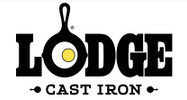What is Cast Iron Seasoning?
What is cast iron seasoning?
Seasoning is a layer of carbonized oil that's been baked onto your cast iron pan, forming a protective layer on top of your cookware. It's what gives your skillet a natural, easy-release finish and makes cooking and cleaning a breeze. The more you cook in your cast iron, the thicker this layer of oil becomes, transforming your pan into an heirloom with a smoother and darker cooking surface.

Polymerization: The science of cast iron seasoning
When oils or fats are heated in cast iron at a high enough temperature, they change from a wet liquid into a slick, hardened surface through a process called polymerization. This reaction creates a layer of seasoning that is molecularly bonded to the iron. Without this layer of carbonized oil, iron cookware would corrode and rust due to the oxygen and moisture in the air.
On a microscopic level, cast iron has a jagged, uneven surface. This texture provides more surface area for the seasoning to bond and adhere to the iron. As the layers build up, the oils and fats will fill in the texture, creating a smooth, naturally nonstick cooking surface that will last for generations.
We get this process started for you by seasoning all of our cast iron cookware right in the Lodge foundries in South Pittsburg, Tennessee. In fact, Lodge was the first brand to foundry-season its cookware. We spray a thin layer of vegetable oil onto the surface and bake it at a high temperature in a large oven. Prior to this innovation, bare cast iron cookware would have to be seasoned in the home before you could cook with it. But now, Lodge cast iron cookware is ready to use right out of the box.
Unseasoned Cast Iron

Seasoned Cast Iron

